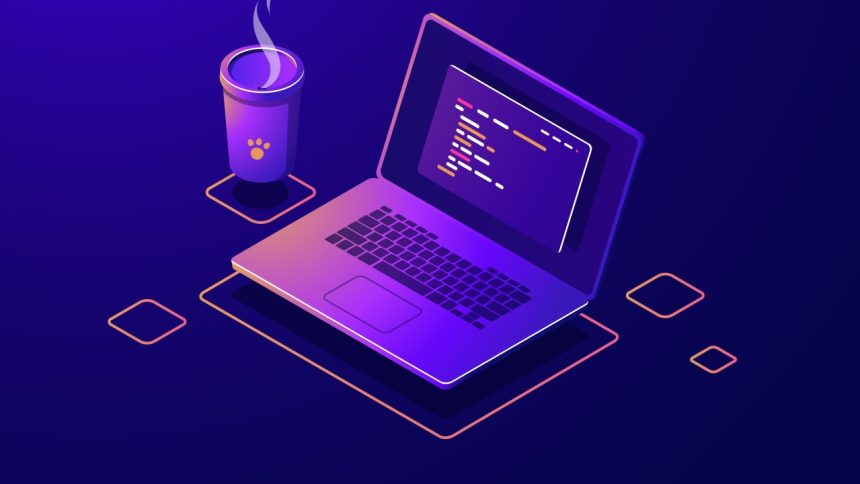Introduction
In Java programming, exception handling is a critical mechanism that ensures the smooth execution of your code, even when unexpected events occur. These unexpected events, known as exceptions, can disrupt the normal flow of the program. By understanding the concept of the Exception class and implementing appropriate exception handling techniques, you can make your program more resilient and reliable.
Key Highlights
- Learn the basics of Java exception handling, a crucial aspect of building robust applications.
- Understand the different types of exceptions in Java, including checked and unchecked exceptions.
- Follow a step-by-step guide to implement try-catch blocks, throw, throws, and finally for effective exception management.
- Explore common Java exceptions like NullPointerException and ArrayIndexOutOfBoundsException, and learn how to handle them gracefully.
- This beginner-friendly guide provides the essential knowledge to start handling exceptions in your Java programs effectively.
Understanding Java Exceptions

Imagine this: you’re writing a Java program, and everything seems to be working smoothly. Suddenly, an unexpected event occurs during runtime, like trying to divide a number by zero. This event is called an exception, and it can cause your program to terminate abruptly if not handled correctly.
Java provides a robust mechanism to deal with these exceptions, allowing you to gracefully catch and manage them, preventing your program from crashing. This process is known as exception handling.
Defining Java Exception Handling
At its core, Java exception handling is about identifying and managing runtime errors gracefully. It’s about creating a safety net for your program so that it can recover from unexpected events without compromising its stability.
The Throwable class sits at the heart of exception handling in Java. It acts as the parent class for all exceptions, providing a common structure for representing and managing errors. When an exception occurs, an object of a specific exception class (inheriting from Throwable) is created. This exception object encapsulates information about the error, such as its type and a descriptive message.
Java’s approach to exception handling often involves using the try-catch block, which allows you to “try” a block of code and “catch” any exceptions that might occur within that block. This way, instead of crashing, your program can execute alternative code or display an appropriate error message.
The Importance of Exception Handling in Java
Exception handling is not just a good practice; it’s fundamental to writing reliable Java applications. When an exception is thrown and not handled, the Java Virtual Machine (JVM) halts the normal flow of the program. This can lead to undesirable consequences, such as data loss or a complete application crash.
By implementing robust exception handling mechanisms, you provide your program with the ability to intercept these exceptions before they reach the JVM. This allows you to maintain the normal flow of the program, even in the face of unexpected events.
You can log error messages, prompt the user for corrective action, or perform other tasks to ensure the program continues to function as intended or terminates gracefully. This makes your applications more stable, user-friendly, and easier to maintain.
The Anatomy of an Exception in Java
In Java, exceptions are organized in a hierarchical structure, resembling a family tree. At the root of this hierarchy lies the Throwable class, the ultimate parent of all exceptions. Branching out from Throwable are two main categories: Exception and Error.
Let’s break down what happens when an exception occurs in Java. Firstly, the Java Virtual Machine (JVM) identifies the error and creates an exception object. This object contains crucial information about the exception, including its type and a message describing the error. The JVM then tries to find an appropriate exception handler to deal with this exception object.
An exception handler is a block of code designed specifically to handle a particular type of exception. If a matching handler is found, the exception is caught, and the code within the handler is executed. If no suitable handler is found, the program terminates abruptly, often with an error message displayed to the user.
The Exception Hierarchy in Java
The Exception class represents exceptional conditions that are often recoverable. These include situations like trying to access an array element that doesn’t exist. Errors, on the other hand, typically represent more serious problems, such as running out of memory. It’s important to note that Error usually indicates a severe issue and might not always be recoverable through your code.

Understanding this hierarchy is essential for effective exception handling because it determines which exceptions you need to catch and handle explicitly.
Checked vs. Unchecked Exceptions Explained
Java divides exceptions into two main categories: checked and unchecked exceptions. Checked exceptions are those that the compiler forces you to handle. These are typically exceptions that might occur during the normal flow of the program, such as file not found errors. The compiler checks your code to ensure that you’re either handling these exceptions using try-catch blocks or declaring them using the “throws” keyword in the method signature.
On the other hand, unchecked exceptions, also known as runtime errors, are not checked by the compiler during compile time. These often indicate errors in your logic or unforeseen circumstances during runtime, such as attempting to access an element beyond the bounds of an array. While you’re not obligated to handle unchecked exceptions explicitly, it’s often a good practice to do so to prevent unexpected program termination.
Preparing for Java Exception Handling
Before you start writing code to handle exceptions, it’s essential to equip yourself with the right tools and knowledge. Java provides rich libraries and a supportive development environment to facilitate efficient exception handling. Moreover, understanding the specific keywords used for exception management will streamline your coding journey.
Let’s explore the essential tools, resources, and fundamental concepts you’ll need to embark on your Java exception handling adventure.
Tools and Resources Needed for Beginners
To effectively handle exceptions in Java, you’ll need to familiarize yourself with a few key tools and resources. One of the most critical resources is the Java API documentation, which provides detailed information on all exception classes, their hierarchies, and common scenarios where they might occur. This documentation is your go-to guide for understanding the exceptions you might encounter and how to handle them.
Furthermore, selecting the appropriate Java Development Environment (IDE) can significantly enhance your exception handling experience. IDEs like Eclipse or IntelliJ IDEA offer features such as code completion, syntax highlighting, and debugging tools, making it easier to write, test, and debug your exception handling code. Lastly, mastering exception handling keywords like try, catch, finally, throw, and throws is crucial. These keywords form the backbone of exception handling in Java, and understanding their usage is paramount to writing robust and reliable code.
Setting Up Your Java Development Environment
Setting up your Java development environment is the initial step toward writing code that can effectively handle exceptions. The core component of this environment is the Java Runtime Environment (JRE), which provides the necessary libraries and tools to execute Java programs.
Coupled with the JRE, you’ll need the Java Development Kit (JDK), which includes the compiler and other tools essential for developing Java applications. Once you have the JRE and JDK installed, consider utilizing an Integrated Development Environment (IDE) like Eclipse, IntelliJ IDEA, or NetBeans. These IDEs simplify coding, testing, and debugging, making your exception handling journey smoother.
With your development environment set up, you’re ready to start writing Java programs equipped to handle unexpected events gracefully.
A Step-by-Step Guide to Handling Exceptions

Now that we’ve covered the fundamentals, let’s walk through the practical steps of handling exceptions in Java. We’ll start with the try-catch block, the cornerstone of exception handling. Then, we’ll explore how to use the ‘throw’ and ‘throws’ keywords to manage exceptions proactively.
Finally, we’ll look at the ‘finally’ block, which plays a crucial role in cleaning up resources, regardless of whether an exception occurs or not.
Step 1: Writing Your First Try-Catch Block
A try-catch block is your first line of defense against exceptions. The concept is simple: you “try” executing a block of code that might throw an exception, and if an exception occurs, you “catch” it and handle it appropriately.
try {
// Code that might throw an exception
} catch (ExceptionType e) {
// Code to handle the exception
}
In this structure, the code within the “try” block is executed. If an exception of type “ExceptionType” occurs within this block, the control is immediately transferred to the corresponding “catch” block. The “catch” block then handles the exception, perhaps by displaying an error message or taking corrective action.
Step 2: Implementing Throw and Throws
While the try-catch block lets you handle exceptions, the ‘throw’ and ‘throws’ keywords provide more control over exception management. The ‘throw’ keyword is used within a method to explicitly throw an exception. This is useful when you want to signal that a specific condition has been met that requires an exception to be thrown.
if (condition) {
throw new ExceptionType("Error message");
}
On the other hand, the ‘throws’ keyword is used in the method signature to declare that the method might throw one or more exceptions. This acts as a heads-up for the calling methods to be prepared to handle these potential exceptions.
Step 3: Using Finally for Cleanup Activities
The ‘finally’ block in Java is designed for cleanup activities, ensuring that certain tasks are performed regardless of whether an exception is thrown or caught. This block is often used to close resources like files, database connections, or network sockets, preventing resource leaks.
try {
// Code that might throw an exception
} catch (ExceptionType e) {
// Code to handle the exception
} finally {
// Code to be executed regardless of an exception
}
The code within the ‘finally’ block is executed in all scenarios: if an exception is thrown and caught, if an exception is thrown but not caught, or even if no exception occurs at all. This makes it an ideal place to release resources and perform any necessary cleanup tasks.
Common Java Exceptions and How to Handle Them
Let’s face it, encountering exceptions is part and parcel of programming in Java. Certain types of exceptions tend to pop up more frequently than others. Understanding these common exceptions and knowing how to handle them is crucial for writing robust and reliable Java code.
We’ll focus on two frequently encountered exceptions: NullPointerException and ArrayIndexOutOfBoundsException.
Handling NullPointerException
The NullPointerException is a notorious troublemaker in the Java world. It rears its ugly head when you try to perform an operation on a reference variable that doesn’t point to any actual object – essentially, it holds a null value.
String str = null;
int length = str.length(); // This will throw a NullPointerException
This exception typically occurs because you’ve forgotten to initialize an object or because a method has returned an unexpected null value. The key to handling NullPointerException is prevention. Always check if an object is null before attempting to access its members or call its methods.
Resolving ArrayIndexOutOfBoundsException
As its name suggests, the ArrayIndexOutOfBoundsException occurs when you try to access an element in an array using an invalid index. An invalid index is any index that’s less than zero or greater than or equal to the length of the array.
int[] numbers = {1, 2, 3};
int value = numbers[3]; // This will throw an ArrayIndexOutOfBoundsException
This usually happens due to logical errors in your code, where the index calculation is incorrect. To prevent this exception, ensure that the index you’re using to access an array element is always within the valid range.
Conclusion
Exception handling is a crucial aspect of Java programming. By understanding the hierarchy of exceptions and how to handle them effectively, you can write robust and error-free code. Remember to set up your development environment properly and familiarize yourself with common Java exceptions. Implementing try-catch blocks, throw, and throws statements, along with finally blocks, will enhance your exception handling skills. Stay informed about both checked and unchecked exceptions to streamline your coding process and create more reliable Java applications. Learning Java exception handling basics is a fundamental step towards becoming a proficient Java developer. If you have any questions or need further assistance, feel free to explore our FAQ section.
Frequently Asked Questions
What is the difference between checked and unchecked exceptions?
Checked exceptions are caught at compile time by the Java compiler, forcing you to handle them in your code. Unchecked exceptions, on the other hand, occur during runtime and are not explicitly checked by the compiler, offering more flexibility in handling them.



